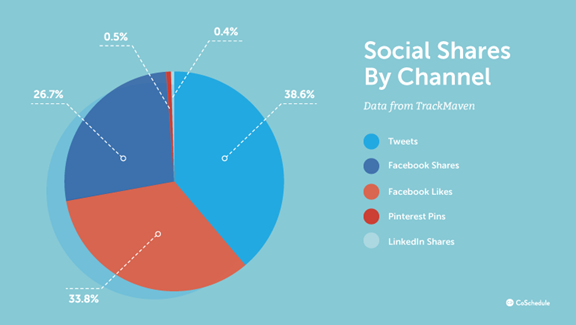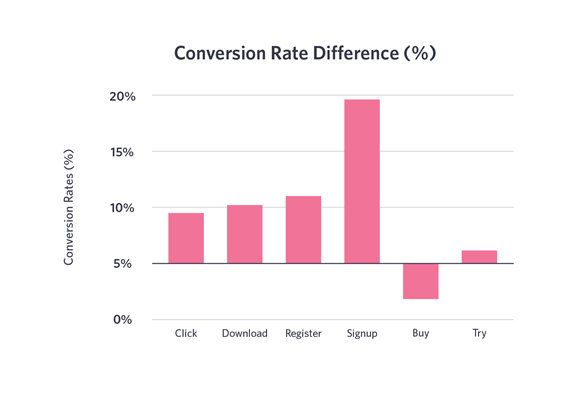The purpose of creating content isn’t just to publish new content. It’s to bring in new visitors, boost sales, increase followers and drive in more traffic. There are those who write blog posts just to write because they enjoy it. However, for the vast majority of published content, there’s a greater purpose behind it.
Not all content performs the same. Some publications, videos, podcasts and other material will fall flat, while other material boosts exposure and helps the creator’s desired goal. It’s all about determining how to create highly engaging content designed to assist in boosting the desired call to action.
To do just that, here are nine tips to create highly engaging content, regardless of the writer, the publication or the desired action.
1) Keep It Focused and Simple
For anyone who has gone through business school, the line of, “Keep it simple, stupid” likely came from professors on more than one occasion. While blunt and to the point, there’s a reason why it’s a critical element in the education of business and marketing professionals.
Blog posts, when not properly crafted, can fork in many different directions. In order to capture a reader’s attention and interest, it needs to have a single concept.
This blog post is about creating highly engaging content. It will not venture into email marketing techniques or how to publish on YouTube. Those are different topics and, while educational and interesting, have no place on this blog.
Every publication needs to have a single idea, concept, and call to action. When multiple calls to action are used, it may disorient the reader or confuse them as to what they will receive when clicking on a provided link. The easier it is to follow the content, the easier it is for readers to deliver on the desired results.
According to WordStream (2018), marketing material with a single call to action (instead of two or more) has an increased click rate of 371% and a boost in generated sales by 1617%. This alone shows the value in keeping posts focused, simple, and to the point.
(Source)
2) Keep it Short
The blog post itself doesn’t need to be short. In fact, longer content tends to perform better. However, a content creator needs to keep sentences and paragraphs short. Any paragraph longer than a handful of lines is too long.
What’s the purpose of keeping sentences and paragraphs short? It helps break up the text. 1500 words of three line paragraphs add more white space, improves the flow and makes it easier to read, as opposed to 1500 words split into three paragraphs.
Breaking up blocks of text is a critical method for spacing out an article and improving reader engagement.
According to Back Linko (2018), sentence and paragraph length plays a big role in overall content readability. In fact, short sentences increase the readability factor by 58%.
(Source)
3) Add in Visuals
The term “A picture is worth a thousand words” has been in use since the early days of newspapers when an editor coined the phrase in reference to using an image on the newspaper.
It takes people time to read an article, but a picture instantly connects with a reader. When thinking back on some of the most influential news journalism ever published, most will instantly think of visuals. Images of protestors standing in front of tanks, or sailors kissing women after returning home from war all have a way of staying with people.
The written word remains important. It offers context to the image. However, the image becomes the central focus of all content. It draws the eye and helps a reader visualize (or quantify) what they are reading.
Pictures also help break up blocks of text. As mentioned earlier, it is critical to break up blocks of text while still providing a reader with substance. In order to improve engagement with published content, a visitor needs to actually read (or at least skim) the material. Visual aids help in this process.
According to The Next Scoop, 40% of visitors to a blog post or other shared content respond better to images than to text alone. Additionally, 80% of what a person sees is retained, as opposed to 10 percent of what someone reads alone.
(Source)
4) Back Up the Data with Accurate Statistics
One of the best ways to instantly add credibility to any post is to include statistics from a reputable source. Reputable sources are known, journalistic publications (such as The New York Times, Forbes, and Newsweek), peer-reviewed journals and educational posts from universities.
The quality of the provided data does matter. There is a reason why college research papers do not allow students to cite Wikipedia or general blog posts from unknown third parties. This is because anyone can edit and create these insights.
The idea of “Fake News” has become a mainstay topic and will likely continue for some time. Due to this, readers are wearier now of generalized information than ever before. That is why it is critical to include not just statistics to back up a point but to use up to date statistics from reliable sources.
The publication time of used statistics is important as well. Generally, it’s best to use the most up to date statistics. When dealing with the Internet and newsworthy information, using the most recently available statistics is important. Providing reader insights on Internet activity from 2005 is no longer relevant.
In some instances, older statistics or information may prove acceptable. If referencing a specific time period, these dated stats have a place. In other instances, when the information will not change (such as the discovery of a planet or when a doctor cured a disease), using older research works just fine.
As All Generalizations Are False (2017) reports, news and statistic reporting sources are broken down into three categories: fact reporting, analysis, and opinion. The graph below indicates the quality of a source when used to back up an argument on a blog post. The higher up on the graph the source appears, the higher the quality of the information.
However, in general, when attempting to connect with a reader and back up a proven point, it’s usually necessary to use up to date statistics from reputable sources.
(Source)
5) The Importance of a Headline
Before someone can read the post, look over the visuals or follow the call to action, they will see a headline. Without an appropriate headline that draws in a prospective customer, client or reader, they will never end up taking in the actual content.
A quality headline will make or break a post. It doesn’t matter how exceptional the information is within the content. It’s similar to an email headline. The body of an email may include coupon codes, free products and everything else a consumer might want. However, if the headline fails to draw the attention of those who see it, it doesn’t matter.
There are ways to increase the impact of a headline. Certain keywords and phrases boost the potential impact of a post. It’s all a matter of including these headlines in order to increase viewership and reader engagement.
According to BuzzSumo (2018), the top shared headline on Twitter included “This is what” in the title. Other top performing headlines included phrases such as “for the first time,” “things to know,” “will make you,” and “’X’ percent of.”
(Source)
6) Diversification
Repeating the same kind of content over and over again isn’t great for return visitors. While attracting new readers is important, the purpose of creating highly engaging content is to turn one-time readers into repeat visitors.
Website visitors want diversification. Providing diversified content also helps attract different kinds of visitors. There are some who want a tips article (such as this). Others may want opinion posts, while there are readers who like how-to articles.
Some kinds of articles will always perform better. However different kinds of posts connect with different kinds of readers and their own interests. In order to continually produce engaging content, it’s necessary to continually put out diversified content.
According to 7 Figure Automation (2018), white papers drive in the most leads for a business-to-business company. The next best performing content includes webinars, case studies, blogs, videos, and infographics.
This will change based on the company and its outreach plan. However, it demonstrates the importance of diversifying the published content.
(Source)
7) Make it Easy to Share
In order to boost potential reader engagement, it’s important for the content to be easily shared. One of the best ways to increase user engagement is to offer social media widgets with the post.
Nearly all platforms used to build a website allow this kind of widget usage. It is important to not limit the social media widgets to the basics of Twitter and Facebook though. Additional sharing did through LinkedIn Pinterest and Google+ (just to name a few) come with the ability for increased exposure.
The more a post is shared and exposed, the higher the likely engagement becomes. It’s all about making it easier on a visitor and reader to share the content.
According to CoSchedule, the inclusion of social share buttons on a blog post increases Twitter shares by 38.6%, Facebook shares by 26.7% and Facebook likes by 33.8%.

(Source)
8) Include a Call to Action
After a visitor reads or skims through the provided content, they need to know what to do next. Having a clear and obvious call to action helps with this.
The call to action tells the reader exactly what they should do. Each publication needs to have a purpose. This purpose is summarized within the call to action. Whether the drive of the content is to boost social followers, increase sales or grow an email list, the call to action needs to inform a reader exactly what they need to do to make this happen.
Even the text used within the call to action plays a big role in user engagement. According to Wistia, a “Signup” stated CTA sees a nearly 20% increase in engagement. The next best is “Register” at 11% and “Download” at 10%.

(Source)
9) Use Video When Possible
This is similar to how visual aids work. Embedded video has the ability to increase the number of hits a post receives. It also makes it easier to share across different platforms, including the search engine/social media site YouTube.
Even if the videos come from a third party, the content breaks up the printed word and will boost visitor engagement thanks to the educational and entertainment factors of the embedded videos.
Ideally, the content creator will also produce his or her own videos. Video product plays an important role in inbound marketing, especially when it comes to social media sharing.
However, when first starting off or when the marketing department or business owner doesn’t have the time to create videos, embedding YouTube videos onto the page still generates more initial traffic.
Video has a way of improving not only user engagement but it helps the company reach its target goals (increased subscriber numbers, boost sales, etc.) faster.
According to VideoZee, 52% of marketers say video provides the best return on investment for all of its marketing expenses. Videos placed on posts receive 53 times the search increase on Google, while the same videos boost conversions by 46%. These are just a few of the ways embedding video into a post helps increase visitor engagement.
(Source)
In Conclusion
Creating quality content is still the best way to increase reader engagement. When visitors and readers enjoy the content they become that much more likely to engage with it. In order to assist with this process though it’s still important to improve the visibility of the post, diversify the written content and take advantage of visuals and quality headlines. By following each and every one of these nine tips to create highly engaging content, a writer, marketing firm, business or anyone else creating the material will begin to see a sizeable improvement in their overall level of engagement.











